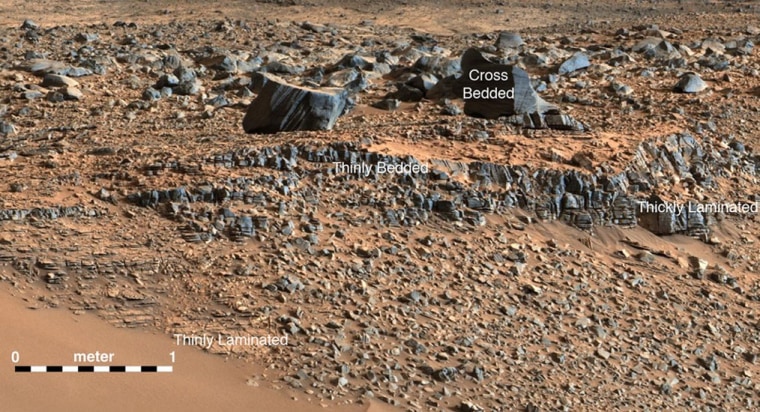The Red Planet's past may be more blue than we thought. A new study based on data collected by the Curiosity Mars rover suggests that Gale Crater, where the rover landed in 2012, may have once been an immense lake fed by moving water.
"Observations from the rover suggest that a series of long-lived streams and lakes existed at some point between about 3.8 to 3.3 billion years ago," said Mars Science Laboratory project scientist Ashwin Vasavada, one of the study's authors, in a JPL news release. These streams built up the base of Mount Sharp, the immense but gently sloping peak rising some 18,000 feet from the floor of Gale crater.

It was supposed before Curiosity arrived that Gale was filled with layers of sediments, which some proposed had accumulated from wind and other "dry" movement. The rover's observations support an alternative theory: that the sediment was at the bottom of an ancient lake. Trails of coarser gravel suggested fast-moving streams, and fine-grained rocks likely formed from mud were found closer to Mount Sharp, which at the time would not have been a mountain, but a basin.
"Right on the other side of Gale's northern rim are the Northern Plains. Some have made the argument that there was a northern ocean sitting out there, and that's one way to get the moisture that you need to match what we are seeing in the rocks," said John Grotzinger, a geology professor at Caltech and lead author of the paper.
Related: Mars Shows Strong Signs of Flowing Water, Researchers Say
Combined with the recent landmark discovery of liquid water near the surface, the concept of Mars as a dusty, sterile planet seems to have gone right out the window — although this is only the beginning of a new line of study as to how that water formed and where it got to.
"What we thought we knew about water on Mars is constantly being put to the test," said NASA's Michael Meyer, lead scientist for the Mars Exploration Program. "It's clear that the Mars of billions of years ago more closely resembled Earth than it does today."
The study was published Friday (Oct. 9) in the journal Science.
